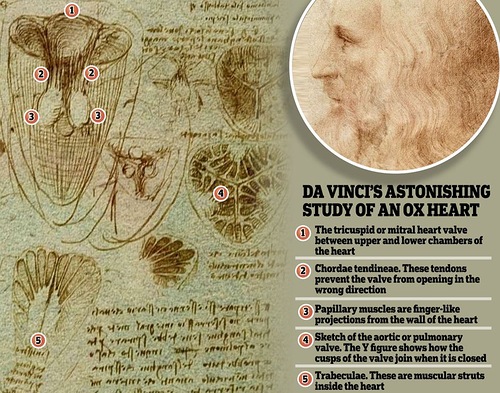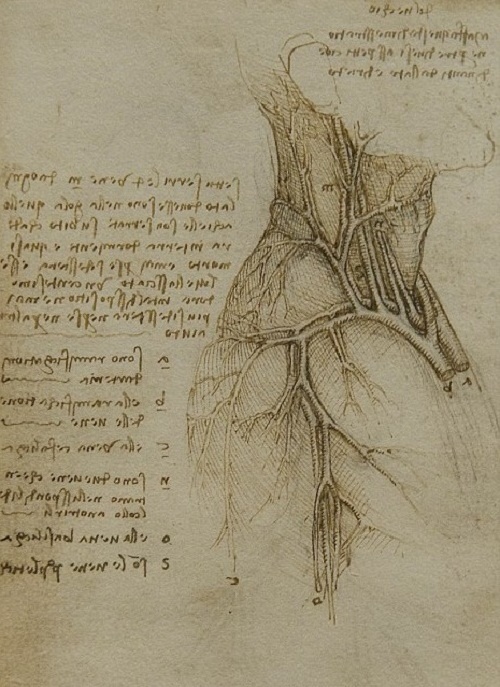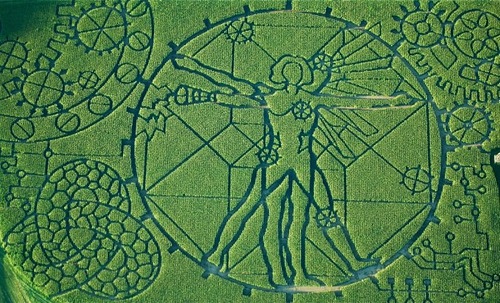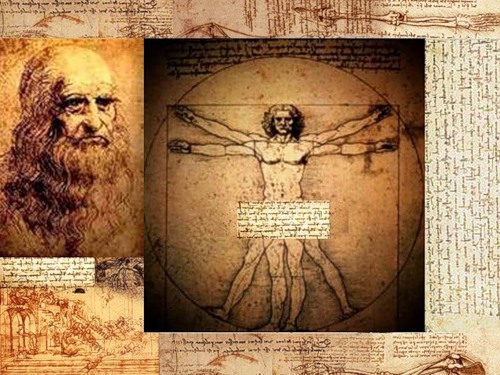Leonardo da Vinci as Anatomist
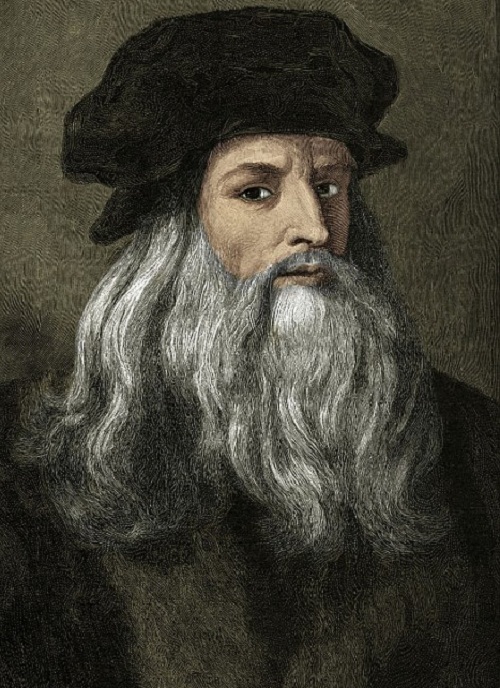
A stunning new exhibition at Buckingham Palace demonstrates his abilities – Leonardo da Vinci as Anatomist
Leonardo da Vinci as Anatomist
Undoubtedly, Leonardo da Vinci was also one of the most ground-breaking anatomists of all time. The 24 drawings kept under lock and key by the Queen that reveal just how far ahead of his time the artist really was. In fact, his ideas and illustrations are brilliant, lucid and centuries ahead. Even professionals now in any scientific field, from medicine to physics, from engineering to chemistry, must be awed by the brilliance of this man. Many of our great geniuses that ever lived earned their reputations over a short period of time in their lives, because of one or a few achievements. Leonardo da Vinci invented, painted, and created masterpieces and ground breaking structures almost everyday throughout his long life. He was the greatest genius that ever lived; no one comes close.
Indeed his findings dating from the late 1490s and early 1500s were so revolutionary that some could not be conclusively proved until the development of MRI (Magnetic Resonance Imaging) scanners in the 1980s, which use radio waves to take detailed pictures of the body.
Da Vinci’s fascination with the human body began through his desire to be ‘true to nature’ in his paintings and led him to embark on what can only be described as a campaign of dissection in hospitals and medical schools throughout Florence.
Many of the corpses he worked on were the bodies of executed criminals or those who had no relatives to claim them for burial. He had hoped to publish his findings in a treatise on anatomy and had he done so, his discoveries would have transformed European knowledge on the subject.
But on his death in 1519, his notes and drawings remained hidden away amongst his mass of private papers and effectively lost to the world for 400 years. Arguably his greatest investigations focus on the workings of the heart – and the artist came tantalizingly close to discovering the science behind the circulation of blood, a century before it was officially achieved.
From his research he deduced that this swelling was responsible for the closure of the aortic value after each beat of the heart – a theory which was not suggested again until 1912 and even then not conclusively confirmed until less than 30 years ago.
Another ground-breaking discovery came in the winter of 1508-1509 when da Vinci was present at the death of an old man. He wrote: ‘And this old man, a few hours before his death, told me that he was over 100 years old, and that he felt nothing wrong with his body other than weakness… And I dissected him to see the cause of so sweet a death.’
Da Vinci then goes on to provide the first ever description and diagnosis of coronary vascular occlusion – a partial or complete blockage of an artery to the heart – as well as arteriosclerosis, or a hardening of the arteries, and cirrhosis of the liver.
Other studies concentrate on muscle form and the body’s reproductive organs, particularly the formation of embryos, with astonishingly detailed drawings of babies still inside their mother’s bodies.
One study illustrating every bone in the human body includes 240 individual drawings of astounding clarity. In addition, more than 13,000 words of notes – all in his famed ‘mirror writing’. Interestingly, most of his drawings are upside-down, due to the fact that he was left handed and dyslexic. In particular, writing in this manner enabled his hand to move quickly without smudging the ink.
Da Vinci, who died in 1519, bequeathed all his notebooks and drawings to his young assistant, Francesco Melzi. The last over the next 50 years, tried to make sense of his master’s daunting legacy. His son sold on many of the papers to the sculptor Pompeo Leoni who mounted the anatomical drawings into a large album. And this eventually made its way to England and is believed to have been bought by King Charles II.
The Royal Collection boasts the largest compendium of Leonardo drawings in the world, some 600 in all, of which 268 are anatomical sketches. Only one other of his anatomical drawings exists elsewhere today. Of these, 87 are currently on display at The Queen’s Gallery in Buckingham Palace. Noteworthy, many of them have never been publicly seen since they were drawn by the genius himself.
Leonardo da Vinci as Anatomist
www.dailymail.co.uk/sciencetech/article-2137367
